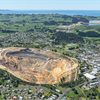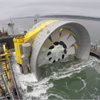Tourism expert calls to scrutinise cruise ships’ emissions
29 Jul 2022
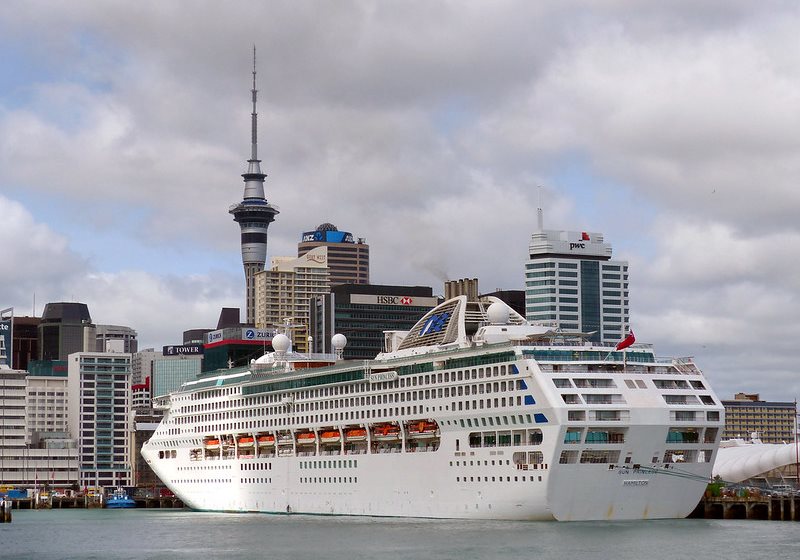
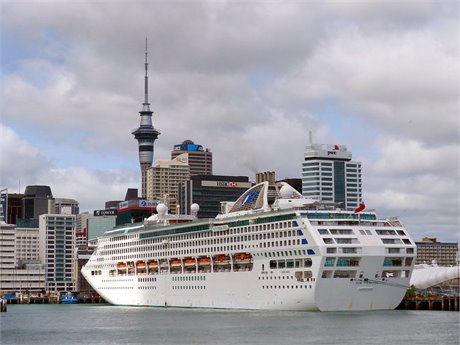 |
| PHOTO: Bernard Spragg |
By Liz Kivi
A sustainable tourism expert wants greater scrutiny around cruise travel, including the impacts of mega cruise ships and their carbon emissions, ahead of the vessels’ return to New Zealand waters in October.
James Higham, University of Otago professor of Tourism, wrote about the issue in The Conversation, which he says resulted in “a flurry of responses” from Kiwis with varied concerns. “People are concerned about cruise ship impacts, from particulate matter in ports to social impact concerns, economic value concerns, and carbon footprint concerns,” he says.
Research shows cruise liners emit the highest per-capita levels of carbon within New Zealand’s tourism sector. “Cruise passengers carry the highest possible footprint imaginable,” Higham says.
Like emissions from international aviation, these emissions are not subject to the Kyoto Protocol or covered by the Emissions Trading Scheme.
Gerda Kuschel, Emission Impossible director and senior air quality specialist, estimates that one cruise ship visit to a port is equivalent to an extra 248,600 cars a day in terms of nitrogen oxides (NOx) emissions - more than Wellington’s entire private fleet.
Kuschel led the team of researchers behind the HAPINZ report, released last week, that estimated 2,000 deaths a year could be associated with nitrogen oxides pollution, in particular nitrogen dioxide (NO2). Nitrogen dioxide mostly comes from ICE vehicles, including cars and cruise ships.
High environmental cost, low value
In spite of the high environmental cost, the New Zealand Institute of Economic Research reports that while cruise tourism accounts for about 9% of international visitor arrivals (about 350,000 cruise passengers and crew) it only contributes 3% of international tourist expenditure.
Before the pandemic, the cruise industry was one of the largest growing sectors in the tourism industry worldwide, with visits to many New Zealand ports doubling over the past decade. In the year ending June 2019, the New Zealand Cruise Association recorded 176 ship voyages and 981 port calls (including an increasing number of overnights), up from 148 and 707 respectively in the 2018 year, according to StatsNZ.
Higham says growth in volume and numbers has accompanied a reduction in spend. “In recent years we’ve seen the development of mega cruise ships with an enormous number of passengers - 6000, 8000, 10,000 passengers.
“The numbers have been going up but the spend is disappointingly small. Part of that is because the onboard experience is all-inclusive. Why buy lunch on shore when you can have lunch onboard?”
A University of Exeter study released late last year said cruising should be regulated as a major source of environmental pollution and degradation affecting air, water, soil, fragile habitats and wildlife. These detrimental effects are in the spotlight in Europe, with the first cruise ship to return to Venice after the pandemic greeted by protesters, while authorities in Barcelona are considering limiting cruise ship numbers.
Kevin O'Sullivan, New Zealand Cruise Association chief executive officer, says the industry is working to make improvements. “Globally cruise ships make up only about 1% of shipping, but cruise lines are at the forefront of maintaining a focus on environmental goals.”
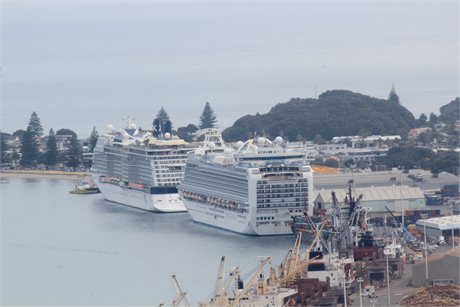 |
| Cruise ships, Port of Tauranga. PHOTO: Will Waters on Unsplash |
"Net zero carbon cruising" by 2050
O'Sullivan cites Cruise Lines International Association’s recent announcement that they were committing to “net zero carbon cruising” by 2050. “There is already a massive investment in new ships with more advanced technologies to reduce emissions, replacing older ships. Cruise lines and ship builders are looking at new generations of fuel technology such as battery storage systems too,” he says.
However the international industry was subject to strong criticism from the UN last month for attempts to water down new environmental regulations despite its members’ climate commitments.
O’Sullivan points out that shipping now uses low sulphur fuel, thanks to recent changes to international regulations.
Emissions expert Kuschel agrees that changes to international regulations mean that cruise ships’ sulphur dioxide (SO2) emissions and particulate matter (PM) emissions should have improved post-COVID, but improvements to CO2 emissions and NOx emissions will be negligible.
“While the ship PM and SO2 emissions have improved significantly (PM by 39%, SO2 by 75%), NOx emissions are likely unchanged because operators would have to install specific emission control equipment to make improvements, which is not a current requirement to visit NZ.”
Part of the reason cruise ships are so emissions-intensive is because the engines need to continue to run even when anchored in port, to power all the amenities the floating resorts provide. Connecting them to shore power could reduce carbon emissions by about 30%.
O’Sullivan says that currently 32% of cruise ships are capable of using shore power, and this number will increase to 66% by 2027. “By 2035 all cruise ships will have that capability, eliminating emissions in ports. Our ports will have to embrace that technology too, of course.”
But no New Zealand ports offer shore power yet, and the costs could be prohibitively expensive.
Shore power’s high price tag
Ports of Auckland 2017 Cruise Vessel Emission Reduction Technologies Feasibility Study estimated the cost of installing a grid supply shore power system could cost between $12 million and $24 million (in $2017).
The study concluded the environmental impact of emissions from berthed vessels is “a significant challenge faced by city ports worldwide” and recommended installing shore power “in the next 5 years” as part of Ports of Auckland’s 2040 zero emission goals.
However Ports of Auckland communications manager Julie Wagener told Carbon News the plan was on hold. “The reality is that any shore power solution will be very expensive. There is also some doubt as to whether the power infrastructure could handle it without a major (and expensive) upgrade. There would also have to be alignment across the cruise industry as most ships can’t use shore power - they simply don’t have the connections.”
O’Sullivan says the Cruise Association is expecting around 875 port calls for the coming season, slightly fewer than 2019 but still more than any year before that. “But this continues to change as we move closer to October.”
But Higham says the cruise industry shouldn’t be returning to ‘business as usual’. He notes the government’s stated aim for regenerative tourism which contributes to the “four capitals” - natural, financial, social, and cultural.
He thinks the cruise industry should be considered through this lens to determine exactly what it is bringing to New Zealand. “I just feel quite strongly, and I’ve spoken to a lot of people who absolutely agree, that there is a lack of scrutiny. So much is said about cruise that is lacking in critical thinking.”
Questionable benefits of cruise tourism
Higham would like to see funding for a project researching cruise in relation to the four capitals. “It could have a dashboard to update carbon emissions in a given year, to give real transparency.
“I suspect that if we had a critical and detailed account of the costs and benefits of cruise ships, mega cruise ships are the first ones we would question.”
He believes all potential environmental impacts should be taken into account. “There are large cruise ships visiting Fiordland. They can’t anchor there so they keep their engines running. We do have this pollution in our supposedly pristine heritage areas in our national parks.”
“What would be the environmental costs of the unthinkable, heaven forbid, a ship stricken in Foveaux Strait or Rakiura Stewart Island. There’s been a deafening silence on these questions and I don’t think it’s unfair to ask for some transparency and accountability in these areas.”
The realities of climate change demand new ways of doing business, Higham says. “To see the tourism sector change to a more sustainable, climate-friendly model, as the minister [of Tourism, Stuart Nash] has said needs to happen, the cruise industry could require a completely new model.”
Higham says it is significant that 1% of the global population is responsible for 50% of aviation emissions, and suggests the proportions for cruise emissions could be similar. “The emissions that arise from international travel and international cruise are just so inequitable. It’s a relatively small proportion of people engaging in these activities, but the carbon emissions are significant. It’s similar to private jet use - there are these exclusive members of society who have outrageously high carbon footprints.
“Wouldn’t it be nice if cruise ships were made to be accountable for their carbon footprints, and made responsible for reducing them?”
print this story
Story copyright © Carbon News 2022




